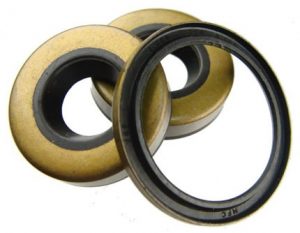
Shaft seals are a common component in machines and industrial equipment. Like all types of seals, they are designed to prevent substances — typically oil or other fluids — from leaking. A shaft seal will create a secure mating surface so that fluids can travel through them in a hollow passage. What is a shaft seal exactly, and how does it differ from a traditional seal?
Overview of Shaft Seals
Also known as lip seals, shaft seals are mechanical devices that are designed to protect against leakage around a rotating shaft. Machines and industrial equipment, of course, often have one or more rotating shafts. Some of these rotating shafts may contain oil- or lubricant-filled passages. To prevent the oil or lubricant from leaking, shaft seals are used.
Rotating shafts use oil or lubricant for several reasons. Lubricant is used to reduce friction within the shaft’s moving, whereas oil is used to both reduce friction and wick away heat. When oil or lubricant is used, though, it must be sealed — and that’s why shaft seals are used. These otherwise small and simple mechanical seals create a leakproof mating surface around a rotating shaft that prevents oil, lubricant or other liquids from leaking.
How Shaft Seals Work
Shaft seals work like most other seals by compressing the surface, or in this case the shaft, on which they are installed. Most of them feature an outer case consisting of steel or an elastomer material, followed by a lip consisting of an elastomeric or thermoplastic material.
Rotating shafts can be affixed with a shaft seal. The shaft seal is placed around the rotating shaft, at which point it seals the oil- or lubricant-filled passage. Even if the oil or lubricant is pressurized, it shouldn’t leak. The shaft seal’s lip will wrap around the rotating shaft. As pressure against the lip increases, it will expand while offering an even higher level of protection against leaks.
Get the Right Size
While most shaft seals consist of an outer case and a lip, they are available in many sizes. You’ll need to choose shaft seals in an appropriate size for the application with which you intend to use them. A shaft seal must be sized to fit the rotating shaft on which it’s installed. If it’s too big, it may fail to create a leakproof mating surface. If it’s too small, conversely, the shaft seal may not slide onto the rotating shaft.
